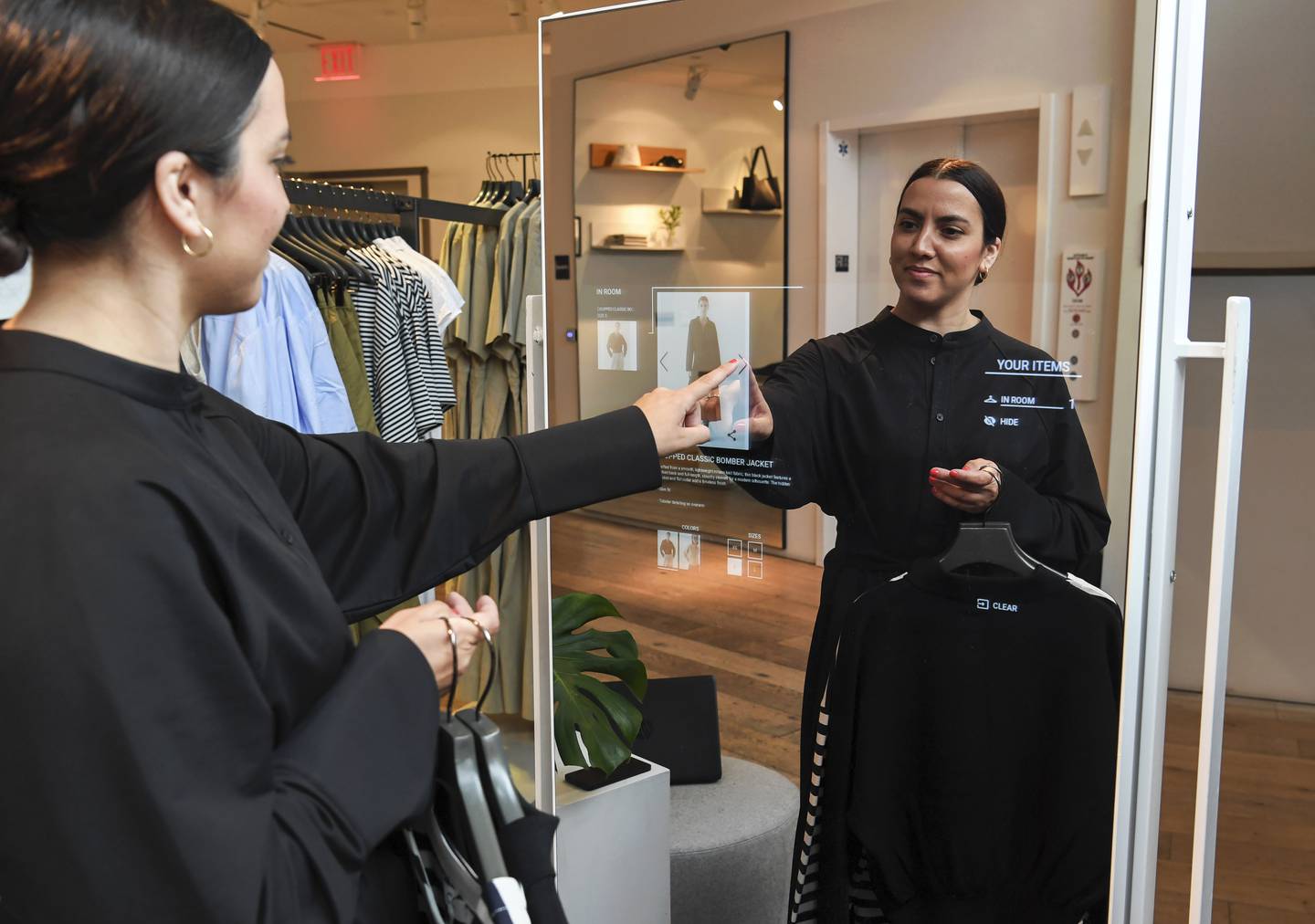
H&M is seeing if it can succeed where other mass retailers haven’t and actually make high-tech stores work.
At its COS brand, the company is rolling out a series of technological enhancements across its 11 US stores. They’ll include mirrors on the shop floor that recognise the product you’re holding and recommend items to pair with it. Fitting rooms will know which items you’ve brought in so you can easily request other sizes or colours. Customers will also be able to check out directly from the fitting room if they choose.
Shop associates, meanwhile, will have a real-time picture of inventory they can see on a tablet or other device. They’ll have full visibility into which products, in which sizes, are in the stock room or out on the selling floor, where they can also see how customers interact with them. They’ll know what inventory is available in other stores or warehouses where COS’ system is live, too, without having to pull it from a back-end inventory management system.
The aim of the technology is to better serve and engage shoppers, whether by suggesting other items they might like based on what they’ve been eyeing in the store or letting them know straight away if an item is available nearby or can be ordered online.
“The impact that we want to create is the need — actually the want — to visit a physical store, and how it can enhance, inspire or make life easier for the customer,” said Lea Rytz Goldman, managing director at COS.
The rollout is beginning at COS’s store in Beverly Hills and will continue through the fall. For now, it’s a trial to see how the technology fares before the company decides whether to expand it further. H&M said it plans to launch the features at a small number of H&M stores in the US as well throughout 2022.
Despite years of fashion toying with these sorts of in-store technologies, they have yet to become commonplace, in part because of costs. Generally, they’ve remained restricted to a limited number of luxury shops. Farfetch, for one, has built high-tech features into its Browns store and partnered with Chanel to integrate them in a few of its locations.
While Amazon just opened its own tech-enabled, brick-and-mortar fashion store, it’s unclear if the company has plans for more stores. In the past, it has tested new store formats for a time and then shut them down.
H&M’s trial at COS is small relative to the size of the company’s physical footprint. COS alone had 271 stores globally as of the end of February, when H&M reported its most recent numbers, while H&M itself had 4,167 locations.
The key enablers of the store tech it’s installing include what Alan Boehme, chief technology officer at H&M Group, called a “flow-through” inventory that entailed lifting the data out of the back-end systems to make it accessible, as well as RFID, which makes it possible to track individual items.
In the past, the high cost of RFID has been an obstacle to brands. But the price of an RFID tag has dropped about 80 percent in recent years, while RFID readers have seen costs fall nearly 50 percent, according to McKinsey. At the same time, their range and accuracy has greatly improved.
Technically, Boehme said, there’s no reason H&M couldn’t use the technology widely.
“The business case for this — I think it surprised all of us — is a pretty darn good business case,” he added.
It’s just up to H&M to decide how to use it, he noted. Rytz Goldman said this will be a learning process where they can get feedback from customers and develop new features as well.


